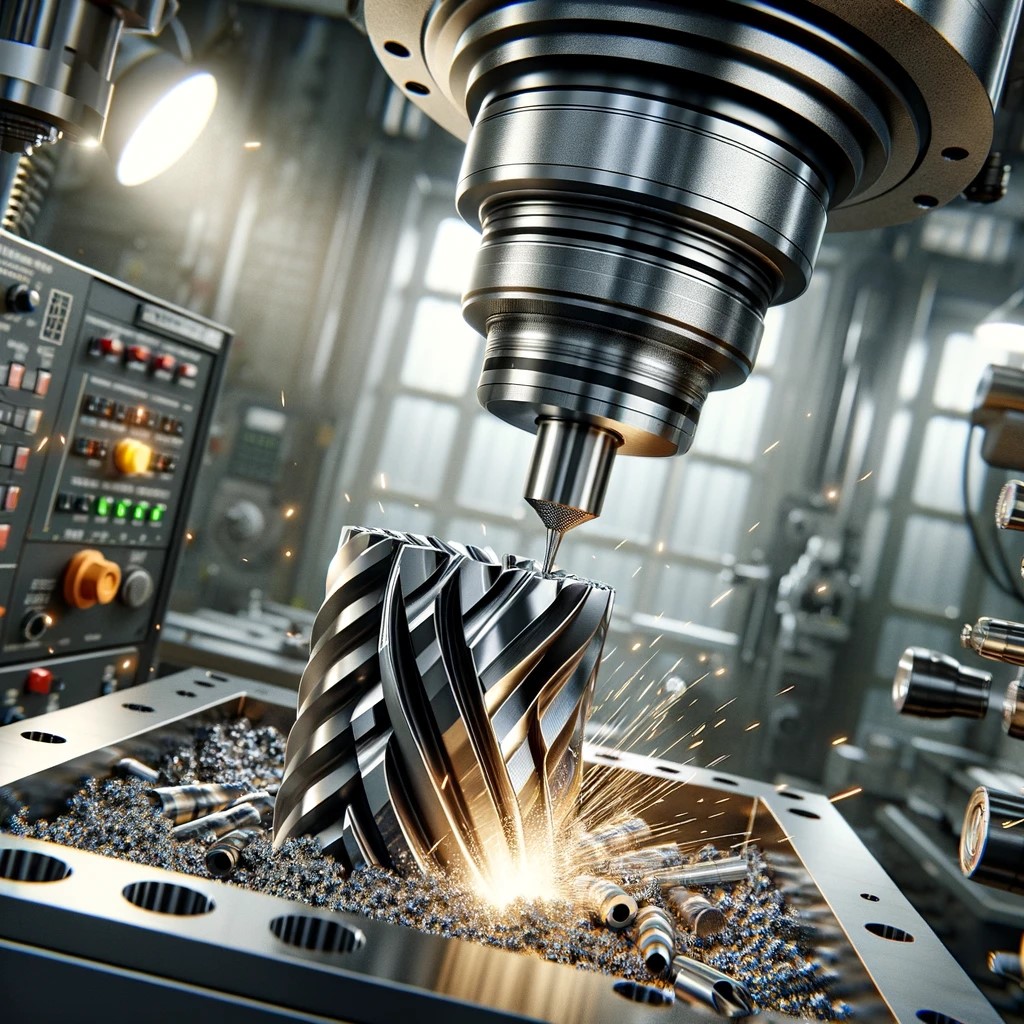In the world of machining and manufacturing, precision and efficiency are not just goals; they are necessities. One of the critical factors in achieving these standards is the selection of the right endmill for the job. Endmills, essentially the cutting tools used in milling machines, come in various designs and functionalities, each tailored to specific types of materials and machining processes. Understanding the differences between these tools, their coatings, and how to optimize feeds and speeds can significantly impact the quality of the finished part and the overall productivity of the machine shop.
By exploring the various types of endmills and their intended applications, machinists and manufacturing professionals can make informed decisions that lead to improved outcomes and reduced machining time. This post aims to guide you through the key considerations in choosing the right endmill, highlighting the importance of tool design, coatings, and operational parameters for different materials.
Guidelines for Selecting Feeds and Speeds
The selection of appropriate feeds and speeds is crucial for maximizing the performance of endmills and ensuring the longevity of both the tool and the machine. Here’s how to determine the right parameters:
- Material Hardness: The hardness of the material being machined significantly affects the choice of feed and speed. Softer materials typically allow for higher feed rates and speeds, while harder materials require slower rates to prevent tool wear and breakage.
- Type of Endmill: The design of the endmill influences optimal feeds and speeds. For instance, high-speed steel (HSS) endmills generally operate at lower speeds compared to solid carbide endmills, which can handle higher speeds and feeds due to their greater rigidity and heat resistance.
- Flute Count: Endmills with fewer flutes can remove more material per cut but require slower feed rates to avoid overloading the tool. Conversely, endmills with more flutes support higher feed rates but may need reduced speeds to prevent excessive heat buildup.
- Depth and Width of Cut: Larger cuts in terms of depth and width require reduced speeds and feeds to manage the load on the endmill. Shallow and narrow cuts can be performed at higher speeds, improving efficiency.
- Machine Capability: The power and rigidity of the milling machine also dictate the feasible feeds and speeds. More powerful and stable machines can maintain higher speeds without compromising precision or tool life.
- Coolant Use: The presence and type of coolant can allow for adjustments in feeds and speeds. Proper coolant application helps in increasing the cutting speed and feed by reducing heat and friction.
By considering these factors, machinists can optimize their machining operations for efficiency, precision, and tool longevity. This careful balance ensures that each operation is as productive as possible, minimizing wear and maximizing output.
Approaching the Right Tool Selection for Specific Parts
Choosing the right endmill for a specific part or material is more than just understanding tool types and coatings; it’s about strategically matching the tool to the job requirements. Here are some steps to guide this process:
- Analyze the Material Characteristics: Begin by assessing the hardness, abrasiveness, and thermal properties of the material. For instance, hard materials like titanium require endmills with robust coatings like TiAlN, while softer materials like aluminum are best machined with sharp, uncoated tools or those with a diamond coating.
- Consider the Geometry of the Part: The complexity of the part’s geometry dictates the choice of endmill. Use ball nose endmills for intricate 3D contours, flat endmills for general-purpose milling, and corner radius endmills for parts requiring durability in the tool’s corners.
- Determine the Finish Requirements: If a high-quality surface finish is essential, opt for finishing endmills with higher flute counts. For roughing out material quickly, a roughing endmill can remove large volumes efficiently.
- Match the Tool to the Machine’s Capabilities: Ensure the selected endmill is compatible with the machine’s power, speed, and precision capabilities. A mismatch here can lead to suboptimal results or even damage to the machine or tool.
- Evaluate Production Volume: For high-volume production, choose endmills that offer the best balance between speed and tool life to minimize downtime. In low-volume or prototype scenarios, versatility might be more important than outright efficiency.
By following these guidelines, machinists can more effectively select the right endmill for each job, optimizing both the machining process and the quality of the final product. This approach not only saves time and resources but also enhances the overall performance of the machine shop.
Examples and Case Studies
To illustrate the principles discussed above, let’s explore some real-world examples and case studies where the proper selection of endmills led to notable successes in machining operations:
- Machining Aerospace Components: A machine shop was tasked with producing intricate aerospace components from Inconel, a notoriously difficult material to machine due to its hardness and heat resistance. By opting for a TiAlN-coated solid carbide endmill with a corner radius design, they achieved the precision needed without compromising tool life, maintaining tight tolerances and a high-quality finish.
- Automotive Prototyping: In an automotive prototype project, engineers needed to machine complex aluminum parts quickly to test new designs. They used a diamond-coated high-speed steel (HSS) endmill, enabling them to achieve a smooth surface finish and high dimensional accuracy while speeding up the production process.
- Fabricating Medical Devices: For a medical device manufacturer, precision is paramount. They used a TiCN-coated flat endmill to machine stainless steel components. The coating’s wear resistance and the endmill’s design ensured a burr-free finish essential for medical-grade parts, proving that the right coating can significantly impact the quality of the output.
- Manufacturing Custom Jewelry: A jeweler used a ball nose endmill to create detailed patterns in soft metals like gold and silver. The endmill’s design allowed for intricate detailing that was both aesthetically pleasing and structurally sound, showcasing how tool selection can enhance artistic expression in industrial applications.
- High-Volume Production of Consumer Electronics: To keep up with the demand for consumer electronics, a factory utilized roughing endmills to quickly remove material from plastic casings. This approach reduced machining time significantly, demonstrating how selecting the right tool for high-volume production can optimize operational efficiency.
Conclusion
Selecting the right endmill for a specific machining operation is not just about understanding the tool’s design or choosing the right coating; it’s about integrating these choices with a comprehensive understanding of the material, the part’s geometry, and the machining environment. This holistic approach ensures that machine shops can achieve optimal results, reducing waste, minimizing tool wear, and enhancing productivity.
By considering the types of endmills, their coatings, appropriate feeds and speeds, and the specific requirements of the part and material, machinists can make informed decisions that lead to efficient and precise machining processes. The examples and case studies we explored highlight the transformative power of the right tool selection in various sectors, from aerospace to consumer electronics.
Armed with this knowledge, professionals in the machining and manufacturing industry can push the boundaries of what their operations can achieve, ensuring they remain competitive and innovative in an ever-evolving field.










